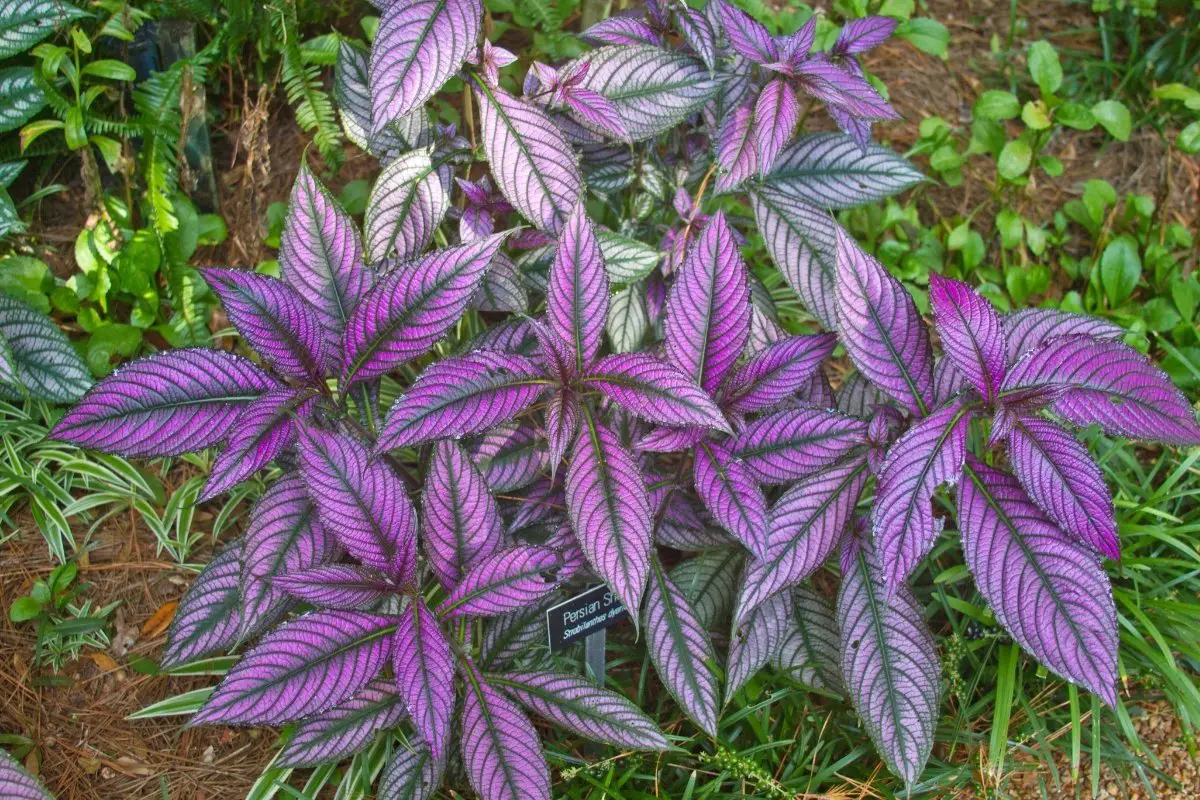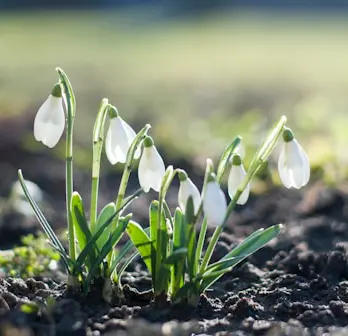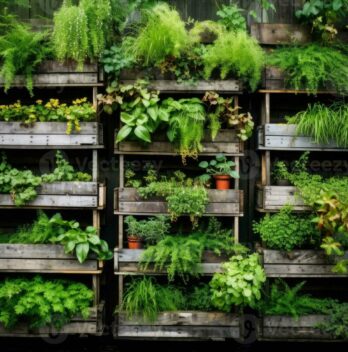Plant with purple and green leaves list is what you will get in this post. Some plants stand out impressively and these plants can be used to beautify our landscape.
When you use purple plants in your landscape, it tends to give this royalty feel because purple is traditionally associated with royalty. Plant with purple and green leaves can adorn and enrich our garden.
Now, when it comes to combining colors to decorate our landscape, you want to go for colors that combine well with each other and avoid any clashing colors. For instance, pairing foliage with red flowers usually clashes. This is why you should know what flowers or plant colors to mix for your landscape and planting with purple and green leaves goes well.
So, to further help you choose the ideal type of plants to decorate your garden, we have compiled a list of some plants with purple and green leaves.
Plant With Purple And Green Leaves: Choosing The Right Purple-Variegated Plant
When it comes to selecting the ideal variegated purple plant for your garden, it usually depends on some factors. You need to look into factors such as local climate and some growing conditions. Personal taste or preference is another thing to look at when it comes to choosing your purple variegated plant.
Here, we will be looking at plants with purple and green leaves that are under purple and green shrubs, purple and green houseplants, then purple and green garden plants.

Check Out In-depth Knowledge On What Ox Heart Tomatoes Is
A. Purple And Green Garden Plants
Here are some lists of purple and green garden plants:
1. Ornamental Cabbage – Plant With Purple And Green Leaves
One annual garden plant with purple and green leaves is the ornamental cabbage. It has these showy leaves that come with a unique color pattern. Their leaves create loose rosettes instead of a compact cabbage head.
Ornamental cabbage color pattern is purple-red and green, green and white, and solid-purple blue. These are usually visual during cool climates that are below 60 degrees Fahrenheit. Therefore, this plant is mostly used between spring and fall in moderate climates and in winter in subtropical and tropical zones.
2. Wandering Jew (Tradescantia Zebrine)
Also, known as the purple inch plant, this species of wandering Jew (Tradescantia) is a type of groundcover plant that has purple and olive green variegated leaves. The plant can grow up to 6 to 12 inches high then they have these trails across the ground in a prostrate manner.
This plant can be grown both indoors and outdoors, hence they can be classified under both garden plants and houseplants. They tend to grow outdoors as an invasive plant in many regions of the world. Then because of this same growing feature they have, they can also be grown indoors as a trailing houseplant.
3. Oyster Plant (Tradescantia Spathacea)
Characterized by their thick clumps of spear-shaped leaves, their leaves are purple underneath with a green and purple stripe above. They are great for border or ground cover. They tend to grow from 6 to 12 inches tall.
- Slow to moderate grower
- Water: Once top 1-2 inches of soil dries.
- Sunlight: Bright, indirect light
4. Persian Shield (Strobilanthes Dyerianus)
This is an amazing garden plant with radiant purple leaves with silver and green color. You can combine them with a yellow flower and get that stunning and eye-catching effect.
If you want to stimulate and encourage a bushier plant, ensure your pinch or trim back the buds. Their growth can go as high as 2 feet to 3 feet. Then they should be spaced about 2 feet apart.
Persian shield in most gardening zones tends to be annual. However, it may last throughout winter in zone 9 to 11.
Read more about 5 Ways On How To Propagate Rosemary
5. Chocolate Chip Bugleweed
This is a low-growing plant that has purple-green leaves with violet-blue flowers. It is used as a colorful ground cover. The best growing US Department of Agricultural zone to grow them is from 4a to 9a.
B. Purple And Green Shrubs
1. Chinese Fringe Flower – Plant With Purple And Green Leaves
This plant is a type of shrub with purple and green leaves. They are ideal to be grown within US Department of Agriculture plant hardiness zone 7 to 10. They are characterized by their shaggy pink flower and shiny foliage and they can make your garden look stunning all year round.
It is the cultivar Burgundy that has the most pronounced colors with a vibrant reddish blush that covers each purple green leaf.
2. Purple Smoke Bush Or Tree
This is another type of shrub with purple and green leaves and it is a hardy variety that is great for cooler regions. The purple-green foliage also has a light pink margin down its center. You can grow them either in containers or in a garden.
C. Purple And Green Houseplants
There are enough houseplants that are purple and green and some of them include:
1. Coleus Plant (Coleus Scutellarioides)
This plant comes in different cultivars with distinctive variegated leaves. One lovely cultivar is the Sibla type of Coleus and this variety features deeply lobed foliage with a purple center and edges that are bright green.
Coleus plants have the tendency to grow from 1 to 3 feet high and can spread in a bushy manner up to 3 feet wide.
This Coleus plant is cold-sensitive which is why they are mostly suitable for a houseplant. However, they can still survive outdoors within the US Department of Agriculture plant hardiness zones 10b to 11a.

Final Note – Plant With Purple And Green Leaves
Plant with purple and green leaves can give your garden that striking look. There are many lists of plants with purple and green stripes foliage that you can pick from to decorate your garden or even your indoor house and we have listed some of them in this article.
FAQ’s
Does Wandering Jew like sun or shade?
The best thing is to provide Wandering Jew with a bit of shade during the hottest time of the day as this can help boost the plant. Then when you are growing Wandering Jew outdoors, make sure you put them in a spot where the temperature stays between 50 to 80 degrees during the most time of the year.
How poisonous is Wandering Jew?
The plant of Wandering Jew isn’t poisonous and there are no known records of toxicity. However, none of the parts of the Wandering Jew plant is edible and the hairy stems and stringy sap may cause some little skin irritation to some people.
Is Strobilanthes poisonous?
Strobilanthes, which is a member of the Acanthaceae family isn’t poisonous. However, their sap may give slight irritation to some people’s skin.
Is Tradescantia spathacea toxic?
Tradescantia isn’t necessarily toxic. The only thing is their leaves contain sap that can be a little irritating to cats, dogs, or even little kid’s mouth.

Eunice is an enthusiastic gardener with a passion for growing beautiful flowers. She loves nothing more than spending time in her garden, tending to her plants and enjoying the outdoors. Eunice has been gardening for over 15 years and has developed a unique style of landscaping that is both practical and aesthetically pleasing. She is especially fond of growing roses and enjoys experimenting with different varieties and colors. Eunice takes great pride in her garden and often shares the fruits of her labor with friends and family. In her spare time, she enjoys reading gardening magazines and attending local horticulture events. Eunice is passionate about her hobby and is always eager to share her knowledge and experience with others.





